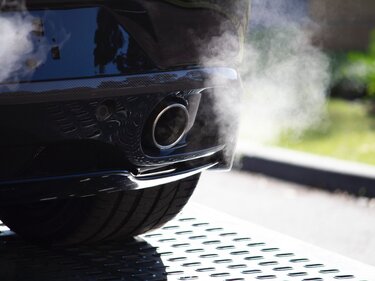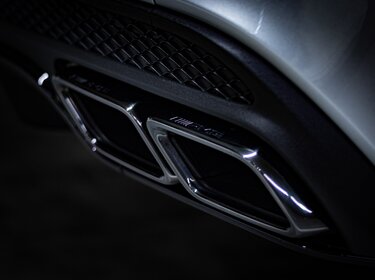On EU-Commission’s Regulation for Non Road Mobile Machinery
Environment
Traffic emissions

If we want our world to remain a liveable place for all people, we must cause as little damage and pollution to the environment as possible. The TÜV Association consequently advocates strict limits and consistent controls on traffic emissions – for both the pollutants and noise emitted by vehicles.
Pollutants
Motor vehicles release pollutants – that is unavoidable. In Germany, traffic is responsible for one fifth of all CO2 emissions. Together with other associations, the TÜV Association is campaigning for the setting of a legal limit to emissions that is as low as technically reasonable. There are various approaches to this.
One approach considers the actual fuel consumption of vehicles. The values the manufacturers provide are determined under lab conditions and therefore diverge considerably from the values actually achieved during daily use. From 2021, these divergences will be investigated and reviewed in order to record the actual CO2 emissions. In future, this can also take place during the regular periodical technical inspection.
The EU is now planning to further reduce the limits for pollutant and greenhouse gas emissions in road traffic. It aims to come closer to its goal of reducing European greenhouse gas emissions in transport by 60 percent (compared to 1990) by 2050 in this way. New exhaust emission regulations must take emissions over a vehicle’s entire usage period into account even more than before to achieve this however. The exhaust emission test as part of the periodic technical inspection is continually being developed further and optimised to this end. However, there is still a lack of awareness that vehicle defects leading to excessive emissions are considered as critical as safety defects. After all, though their damage potential is not immediately discernible, they are in fact considerably higher for the environment.
The switch to alternative drive systems such as electric and hybrid vehicles is beneficial to the environment, hence the TÜV Association advocates and supports this transition. It sees great potential in the implementation of modern and environmentally-friendly traffic concepts to improve air quality in urban areas: mobility must be rethought.
Noise
The TÜV Association is committed to limiting the impact of noise on people and the environment to the unavoidable. Unduly loud vehicles are not acceptable.
The TÜV Association therefore calls for:
- consideration of each of a vehicle’s selectable configurations during tests
- approval only for features that cannot be switched off
- general checks of the loudest mode – also for stationary noise
Electronic sound generators that provide an “emotional sound experience” are becoming increasingly popular in both cars and motorbikes. It is therefore important for the assessors to also be granted insights into the corresponding software. Only in this way can they determine how loud vehicles can really be.
Do you have any questions?
![Richard Goebelt [Translate to Englisch:]](/fileadmin/_processed_/a/b/csm_TUEV-Verband_Richard_Goebelt__C__Tobias_Koch__5__1800_px_c6d99ce0b2.jpg)
Richard Goebelt
Director of Automotive and Mobility, Member of the Management Board
![Frank Schneider [Translate to Englisch:]](/fileadmin/_processed_/6/f/csm_TUEV-Verband_Frank_Schneider__C_Tobias_Koch_1500_px_breit__1__a7a35d568f.jpg)
Frank Schneider
Head of Automotive Engineering and Service Innovation





